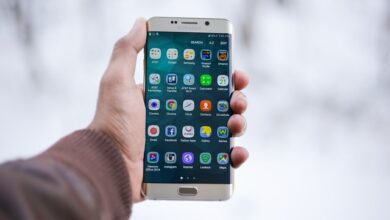
The smartphone industry has seen numerous innovations over the past decade, but none have generated as much excitement as foldable phones. This relatively new category of mobile devices promises to change the way we interact with our phones by combining the compact convenience of a traditional smartphone with the larger screen real estate of a tablet. From futuristic concepts to mainstream devices, the rise of foldable phones is shaping the next chapter of mobile technology. In this article, we’ll explore the history, evolution, and future of foldable phones, examining the challenges and opportunities they present to both consumers and manufacturers.
The Origins of Foldable Phones
Foldable phones may seem like a cutting-edge innovation, but the concept of foldable displays has been in development for years. Research into flexible display technology dates back to the early 2000s, when companies like Samsung and LG began experimenting with OLED (organic light-emitting diode) technology, which has the ability to bend and flex without breaking. At the time, these early prototypes were considered experimental, and it wasn’t until the late 2010s that the technology matured enough for mass production.
In 2018, Royole Corporation, a lesser-known Chinese company, introduced the world’s first commercially available foldable phone, the Royole FlexPai. While the FlexPai was not a commercial success due to its bulky design and underwhelming performance, it paved the way for other manufacturers to enter the foldable market. Soon after, tech giants like Samsung, Huawei, and Motorola followed suit with their own versions of foldable phones, pushing the boundaries of design and functionality.
Key Features of Foldable Phones
At their core, foldable phones aim to provide users with a device that offers the best of both worlds: the portability of a smartphone and the versatility of a tablet. The defining feature of foldable phones is their flexible display, which allows the device to be folded in half, either horizontally or vertically. This design allows users to switch between a smaller, pocket-sized phone and a larger screen for more immersive activities such as watching videos, gaming, or multitasking.
- Flexible Displays: The most important component of a foldable phone is its display. These screens are made using OLED technology, which is thin, lightweight, and can bend without damage. Advances in flexible glass and plastic substrates have made it possible for foldable screens to become more durable and resistant to everyday wear and tear. Samsung’s Ultra-Thin Glass (UTG), for instance, is an example of how manufacturers are improving foldable screen technology.
- Multiple Form Factors: Foldable phones come in various designs, the most common being the “book-style” fold, where the device opens and closes like a book (e.g., Samsung Galaxy Z Fold). Another popular design is the “clamshell” fold, which is reminiscent of old flip phones, where the screen folds vertically in half (e.g., Samsung Galaxy Z Flip, Motorola Razr). Each form factor offers unique advantages depending on the user’s preferences for screen size, portability, and use cases.
- Enhanced Multitasking: Foldable phones are designed to enhance multitasking by offering larger screens. For example, users can run multiple apps side by side, watch videos while browsing the web, or work on documents with ample screen space. Many foldable devices come with optimized software that supports multi-window functionality, making it easier to switch between tasks seamlessly.
- Durability Improvements: One of the early criticisms of foldable phones was their durability, especially concerning the folding mechanism and screen longevity. Manufacturers have since made significant strides in improving the hinge designs and materials used in foldable phones to ensure they withstand regular use. Features like water resistance and dustproofing are being added to address the concerns of long-term reliability.
Challenges and Innovations
As with any new technology, foldable phones come with their own set of challenges. The initial wave of foldable devices faced criticism for being too fragile and expensive for the average consumer. However, manufacturers have been quick to address these issues, working to create more durable designs and exploring ways to reduce production costs.
Durability Concerns
The folding mechanism is perhaps the most critical component of any foldable phone. Early models were prone to wear and tear, particularly around the hinge area, which led to creasing and, in some cases, screen failure. Companies like Samsung and Huawei have made notable advancements in hinge design, incorporating sophisticated engineering solutions to ensure smooth folding action while reducing stress on the display. Furthermore, the introduction of Ultra-Thin Glass (UTG) in foldable displays has significantly improved screen durability compared to earlier plastic-based models.
Another area of concern is the overall lifespan of foldable devices. Due to the constant folding and unfolding, the screen’s longevity is a key factor. Manufacturers are continuously testing their devices to ensure they can withstand thousands of folds over time, which will be essential for consumer confidence.
High Price Point
Foldable phones have also faced criticism for their high price tags. Early models were priced well above $1,500, making them inaccessible to most consumers. The cost is largely due to the complexity of manufacturing flexible displays and the use of premium materials. However, as the technology matures and production scales, prices are expected to come down, making foldable phones more affordable for the general public.
App Optimization
Another challenge for foldable phones is software optimization. Many apps are not yet fully compatible with the larger, foldable displays, which can result in a suboptimal user experience. To address this, companies like Google are working with developers to create apps that can seamlessly adapt to foldable screens, ensuring that users can take full advantage of the extra screen space.
The Current Market and Popular Models
Foldable phones have gradually become more mainstream, with several leading brands offering their own versions of the device. Let’s take a look at some of the most popular models on the market:
- Samsung Galaxy Z Fold Series: Samsung has been a pioneer in the foldable phone space, and its Galaxy Z Fold series is currently the most popular foldable device. The Z Fold offers a tablet-sized screen when unfolded, making it ideal for productivity tasks, media consumption, and gaming.
- Samsung Galaxy Z Flip Series: For those who prefer a more compact device, the Galaxy Z Flip series offers a clamshell design that folds vertically. It combines modern smartphone capabilities with the nostalgia of classic flip phones, making it a popular choice among users looking for both style and functionality.
- Huawei Mate X Series: Huawei’s Mate X series is another strong contender in the foldable phone market. It features an outward-folding design, which means the screen is always exposed, whether folded or unfolded. The Mate X offers impressive performance and a large display, but its availability has been limited due to Huawei’s ongoing issues with U.S. trade restrictions.
- Motorola Razr: Motorola revived its iconic Razr brand with a foldable version that takes inspiration from the original flip phone. The new Razr combines the nostalgia of the classic design with modern foldable technology, though it has faced mixed reviews due to performance limitations.
The Future of Foldable Phones
The foldable phone market is still in its early stages, but its future looks promising. As manufacturers continue to refine their designs, we can expect foldable phones to become more durable, affordable, and widely available. Some of the future trends that we might see in foldable phones include:
- Lower Prices: As the technology behind foldable phones becomes more refined and production scales up, the cost of these devices is likely to decrease. This will make foldable phones more accessible to a broader range of consumers.
- Improved Durability: Manufacturers are continually working to improve the durability of foldable phones, particularly when it comes to hinge designs and display materials. Future models are expected to be even more robust, with features like water and dust resistance becoming standard.
- More Form Factors: While the current foldable phone market is dominated by book-style and clamshell designs, we can expect to see more diverse form factors in the future. Companies are experimenting with tri-fold designs, rollable displays, and other innovative concepts that could further blur the line between smartphones and tablets.
- Enhanced Software Support: As foldable phones become more common, software developers will continue to optimize their apps for larger, flexible screens. This will improve the overall user experience and unlock new possibilities for multitasking and productivity.



